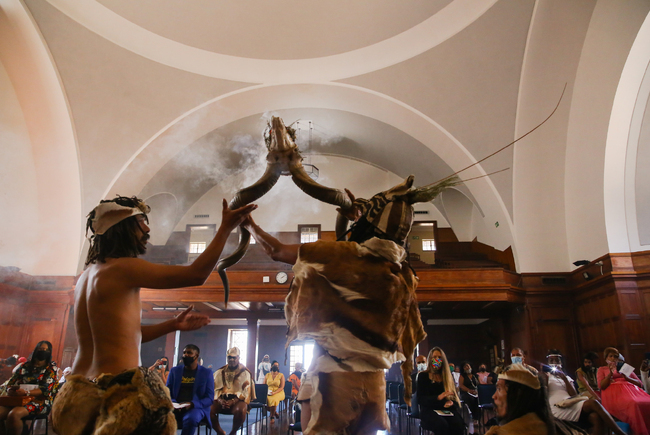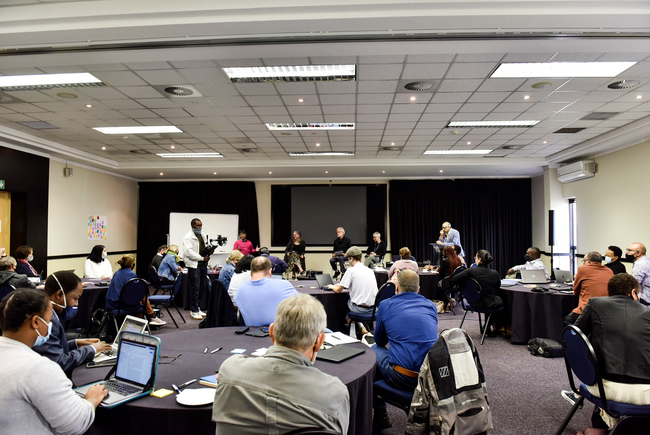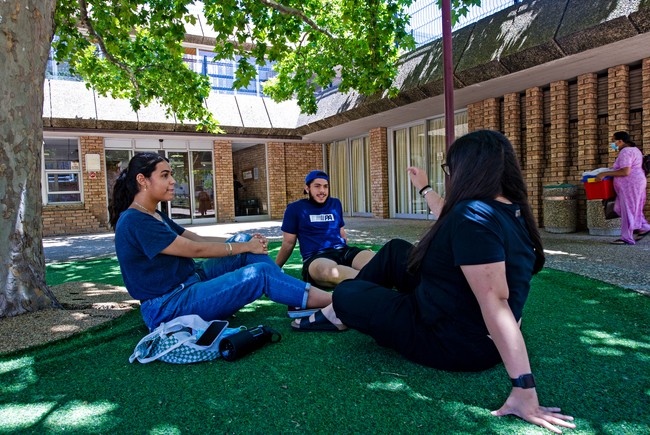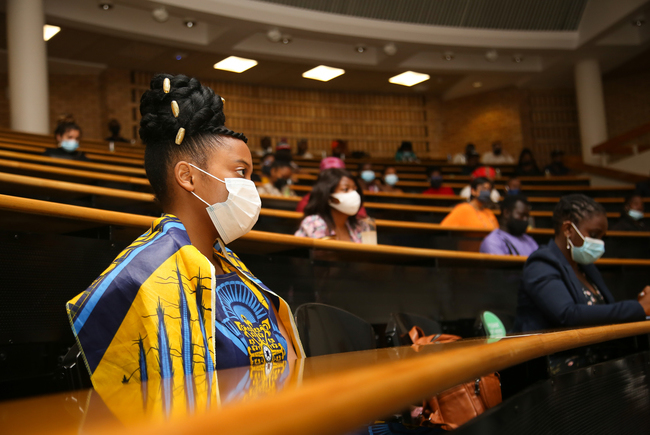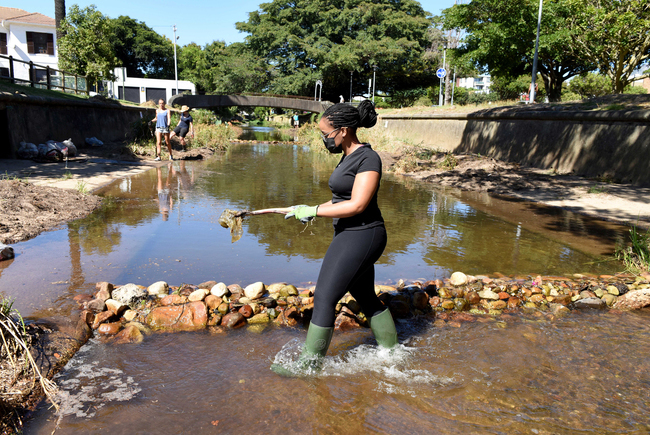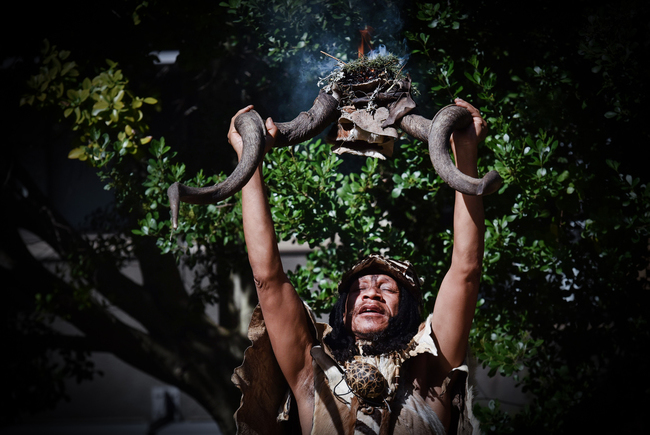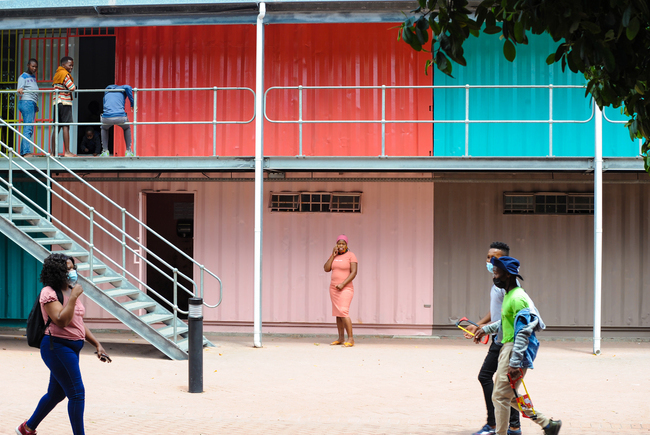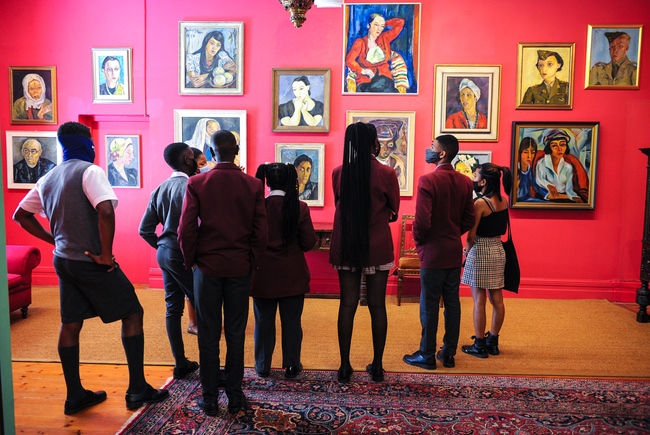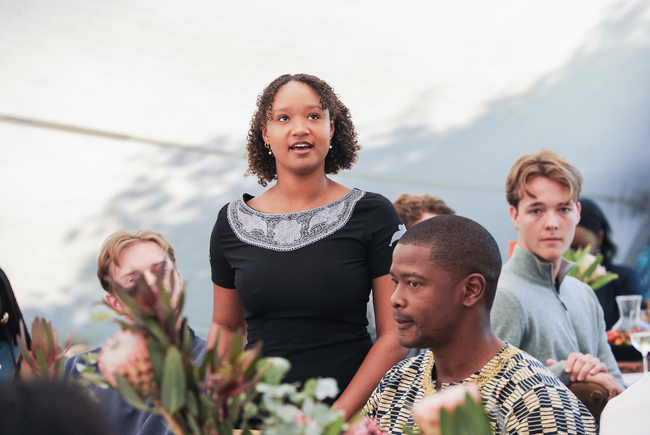Overview of benchmark results
04 November 2022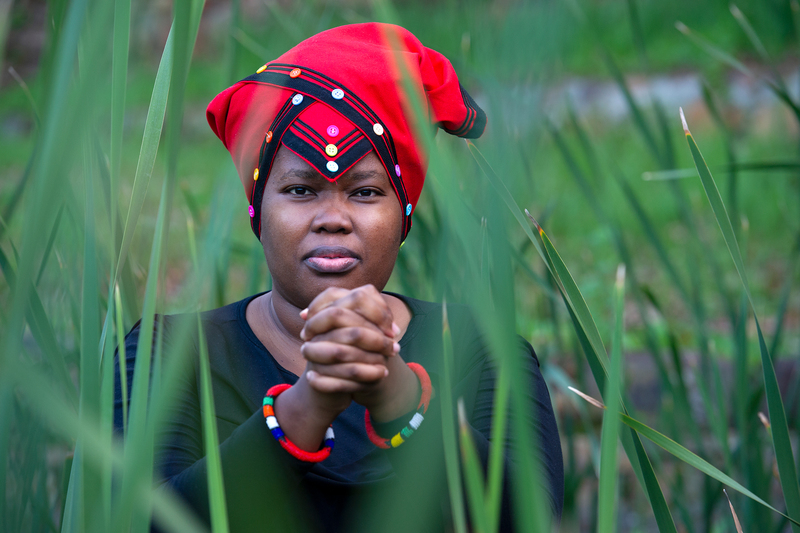
The graph below highlights the extent to which UCT has met the transformation benchmarks over the 2019–2021 period. The graph captures this through representing the percentage of benchmarks met. The graph is representative of the entities which responded in each year.
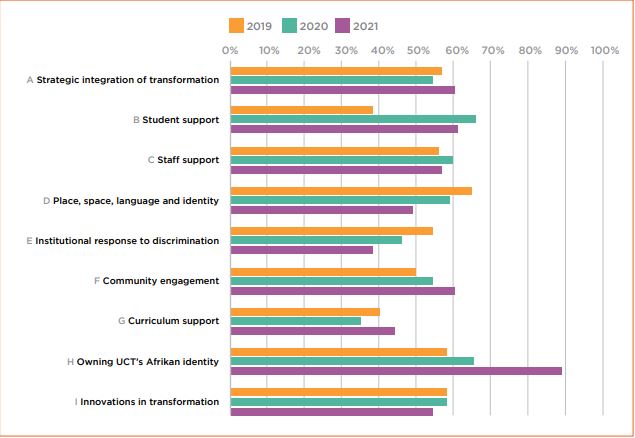
Above: The graph shows the extent to which UCT met the transformation benchmarks in 2019, 2020 and 2021. For example, in 2021 UCT on average met three out of the six criteria for the “strategic integration of transformation” benchmark, and three out of four of the criteria for the “student access and support” benchmark. The graph illustrates where UCT’s areas of strength and weakness are, and the narrative provided shares some explanation of these.
While there is data available for 2019, 2020 and 2021, it is important to only use these as an indication of progress, regression or stagnation. This is because the scores on their own don’t indicate the quality of the actions undertaken (this is better captured through the qualitative descriptions), the environmental factors at play (such as COVID-19) or other changes in the environment (for example, leadership changes in the transformation portfolio). Even with these limitations, the benchmark scores offer an indication of the challenges and changes related to TDI work.
- Possible progress: Actions under benchmarks B, F and H have grown over the three years, which could indicate support for change in this area. These could be understood as emerging areas of strength.
- Peaks and dips: Actions under benchmarks A, C, G and I have gone up and down, and it’s unclear in which direction these benchmarks will move. These could be understood as areas of divergence with different entities moving in different positive or negative directions.
- Indication of a problem: Actions under benchmarks D and E have declined each year, which could indicate a problem or challenge. These could be understood as areas where insufficient support or priority is accorded.
What do the benchmarks reveal?
Thirteen entities (at the level of faculty and non-academic department) completed their benchmark reports in 2021:
| Centre for Higher Education Development | CHED |
| Faculty of Commerce | COMM |
| Department of Student Affairs | DSA |
| Faculty of Health Sciences | FHS |
| Graduate School of Business | GSB |
| Human Resources Department | HR |
| Faculty of Humanities | HUM |
| International Academic Programmes Office | IAPO |
| Faculty of Law | LAW |
| UCT Libraries | LIBR |
| Properties and Services | P&S |
| Research Office | RO |
| Faculty of Science | SCI |
Several others submitted partially completed reports. All 13 completed reports were used for the visual representations of the benchmarks in each section. Reflections, anecdotes and stories from each department and faculty are shared in the “What does the benchmark reveal?” section. This section also includes good practice stories relevant to each benchmark.
Overall, every faculty and several departments reported actions which enabled staff and student access, support and success. These included ensuring students had access to psychosocial and education support, and focusing on diversifying both student and staff demographics. Faculties and departments also reported actions which supported staff development and growth, and which focused on UCT’s African identity (and responded to racism). Some benchmark areas reported fewer actions in 2021, including the focus on place, space, language and identity.
 This work is licensed under a Creative Commons Attribution-NoDerivatives 4.0 International License.
This work is licensed under a Creative Commons Attribution-NoDerivatives 4.0 International License.
Please view the republishing articles page for more information.
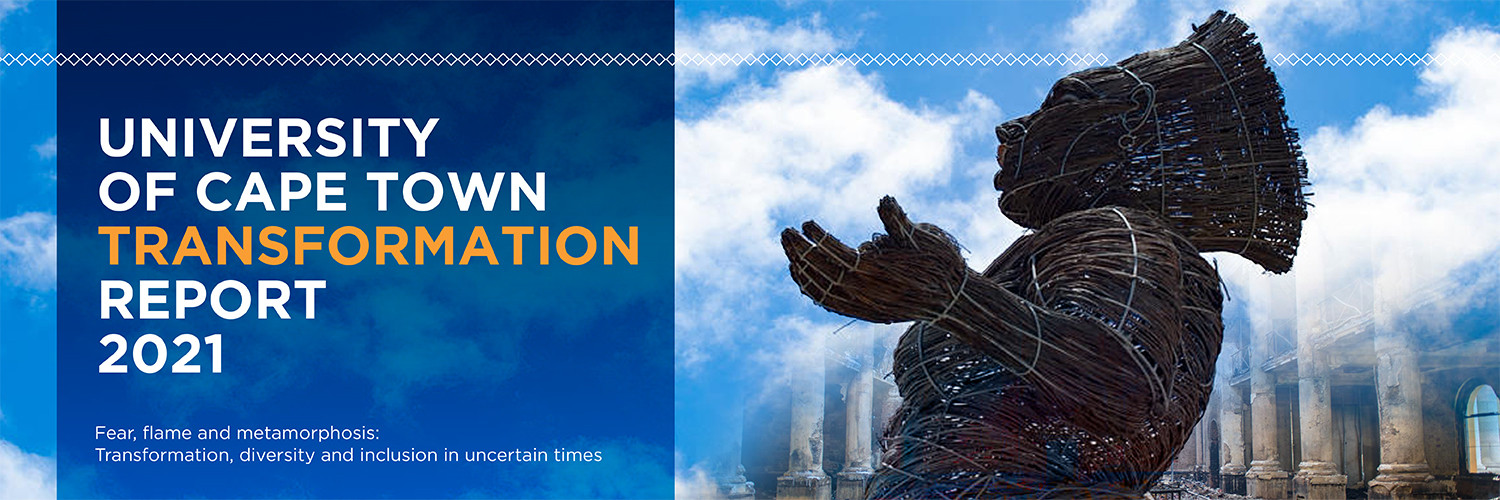 Mama Thembi – one of the three Thembis of Phillippi by women sculptors Angela Mac Pherson, Jen Bam and Sean Mac Pherson. Commissioned by the UCT GSB, the concept is a celebration of women as holders and creators of safe spaces. The vision was for these sculptures to create areas in the open back area of Phillippi Village to seed the future garden, and to create places of safety for plants, birds and people to gather and grow in the harsh climate. Monwabisi Dasi did the welding work with the help of 36 other artists and artisans from Phillippi, Napier and Muizenberg.
Mama Thembi – one of the three Thembis of Phillippi by women sculptors Angela Mac Pherson, Jen Bam and Sean Mac Pherson. Commissioned by the UCT GSB, the concept is a celebration of women as holders and creators of safe spaces. The vision was for these sculptures to create areas in the open back area of Phillippi Village to seed the future garden, and to create places of safety for plants, birds and people to gather and grow in the harsh climate. Monwabisi Dasi did the welding work with the help of 36 other artists and artisans from Phillippi, Napier and Muizenberg.
An introduction to the 2021 Transformation Report
The UCT Transformation Report 2021 is titled “Fear, flame and metamorphosis: transformation, diversity and inclusion in uncertain times”. It is titled to reflect that in 2021, the UCT community was challenged with racism, queer- and transphobia, and socio-economic disparities. The fire in the Jagger Reading Room brought forward important questions about how coloniality and gatekeeping continue to frame UCT as an exclusive and inaccessible space. Yet even with these challenges the university, through transformation agents, was able to transform these difficult realities through tactical and innovative actions. Through cohesive inclusivity strategy initiations in faculties and departments; developments in succession planning, retention and recruitment; recognition of the voluntary work of transformation committees through the inclusion of key performance areas for transformation, inclusion and diversity work in job descriptions; dialogical spaces, seminars, capacity strengthening, training and other events-based interventions, campaigns and curated art interventions; and innovations in research, teaching and learning, current realities were metamorphosised into safer and more affirming spaces.
How to read the 2021 Transformation Report
Please click and slide/swipe to the left to see the next point:
An overview of transformation
Setting the scene for the 2021 Transformation Report.
Benchmark results for 2021
Introducing UCT’s transformation benchmarks.
Looking ahead
The conclusion and recommendations of the 2021 Transformation Report.
Transformation resources and references
Transformation, inclusivity, and diversity is based on continual growth and development. Listed below are the articles and poems referenced in this report, and some other useful texts to help make sense of 2021.









